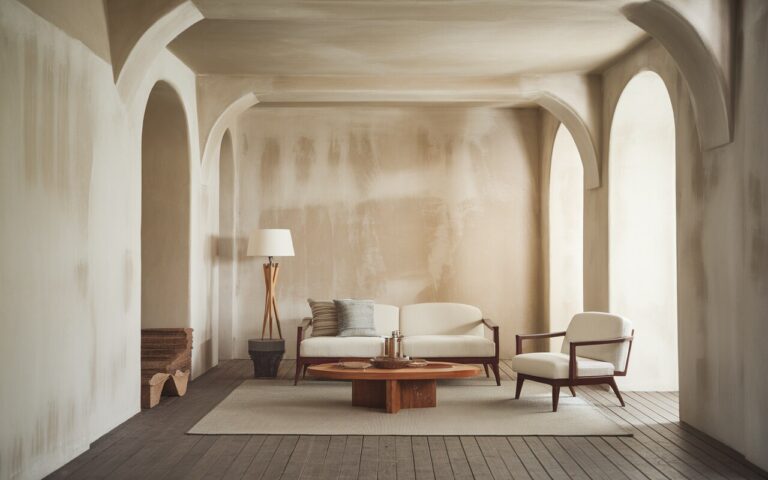In this blog, I will share how modern drywall texture types can transform your space. Walls are not just structural elements, they influence how a room feels and functions. The right texture can hide flaws, enhance lighting effects, and add personality.
Whether you prefer a sleek, smooth surface or a bold, textured design, choosing wisely ensures a space that reflects your style.
A smooth finish creates a clean, contemporary look, ideal for modern homes. Knockdown and orange peel add depth while masking imperfections. If you want a high-end appearance, Venetian plaster delivers a polished, luxurious feel.
Each texture serves a purpose. You need to just understand their strengths to help you make the right choice for your homes design and durability.
The Pros & Cons of Modern Drywall Texture Types
Benefits of Textured Drywall
- Hides imperfections – Textured drywall conceals small cracks, dents, and uneven surfaces, making walls look smooth and well-finished. It is ideal for older homes or walls with minor flaws.
- Adds personality Different textures create unique visual effects. A knockdown texture adds warmth, while Venetian plaster brings elegance. Choosing the right texture helps shape the rooms overall style.
- Improves acoustics Some drywall textures, like popcorn and slap brush, absorb sound and reduce echo. This makes them great for bedrooms, offices, and home theaters.
- Enhances durability Textured walls resist scuffs, dents, and everyday wear better than smooth finishes. This makes them a smart choice for hallways, kids’ rooms, and high-traffic areas.
Drawbacks to Consider
- Harder to clean Rough or deeply textured surfaces trap dust and dirt more easily than smooth walls. Cleaning requires gentle scrubbing or vacuuming, especially for textures like popcorn or Spanish lace.
- Difficult to alter Changing or removing a texture takes effort. Smoothing out textured walls often requires sanding, skim coating, or reapplying drywall compound, which can be time-consuming.
- Style limitations Some textures, like heavy stucco or popcorn, may look outdated in modern spaces. If you prefer a sleek, contemporary design, smooth or lightly textured finishes work best.
9 Best Modern Drywall Texture Types for 2025
Here are the top modern drywall texture types that are trending this year. Each one offers unique benefits, allowing you to create a look that fits your style and space.
1. Smooth Finish
A smooth finish is the go-to choice for modern homes. It creates a clean, seamless look that works well with contemporary and minimalist interiors. Since there are no bumps or ridges, it allows paint colors to stand out and reflect light beautifully.
You need to just achieve a perfectly smooth surface requires skilled application. Even the smallest dents or uneven patches are visible, making surface preparation essential.
Pros: Works with any decor, looks sleek, and is easy to repaint. Cons: Shows flaws easily and requires expert application for a flawless finish.
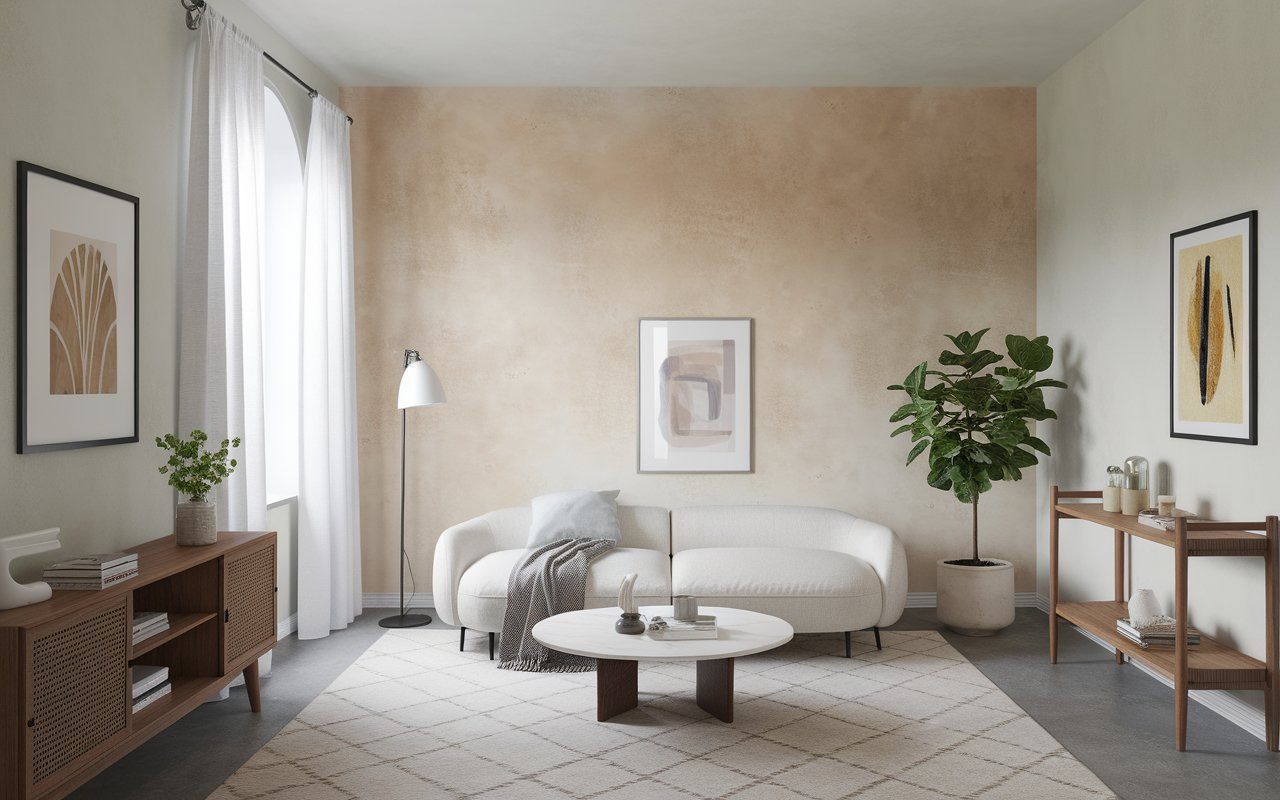
2. Knockdown Texture
Knockdown texture adds a soft, stucco-like effect to walls. It provides a little depth without feeling overwhelming. This texture is great for busy homes since it hides small imperfections while still looking refined.
The application involves spraying drywall compound and flattening it with a trowel, creating a warm, inviting feel. However, the slight texture can make cleaning more challenging, as dust can settle in the crevices.
Pros: Durable, hides imperfections, suits various styles.
Cons: Requires occasional dusting and can be harder to clean.
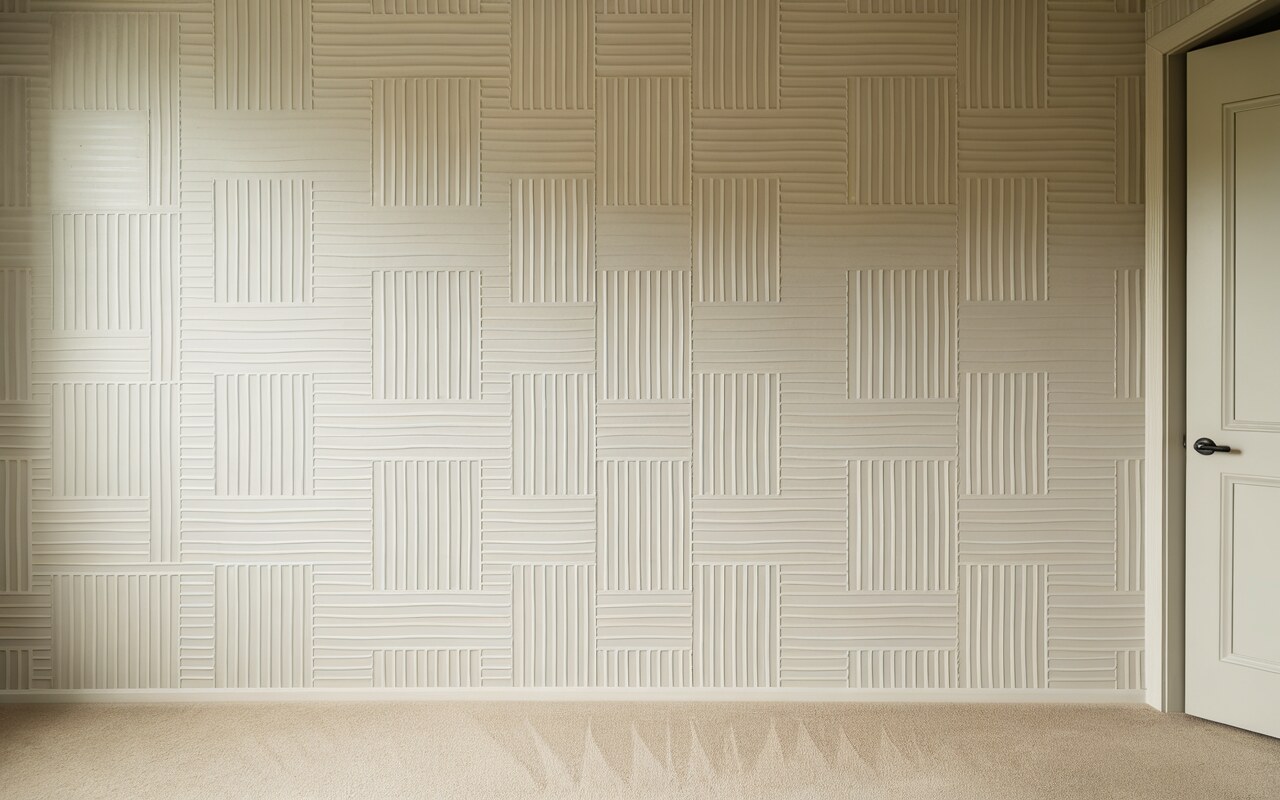
3. Orange Peel
Orange peel texture is a simple yet effective way to add dimension to walls. It has a subtle, bumpy surface that resembles the peel of an orange. This texture is commonly used in modern homes because its affordable, easy to apply, and durable.
Unlike heavy textures, it still keeps walls relatively smooth, making it a great compromise between flat and textured finishes. However, it lacks bold character, so if you want dramatic walls, this may not be the best option.
Pros: Budget-friendly, conceals minor wall flaws, and is easy to maintain.
Cons: Not as visually striking as other textures.
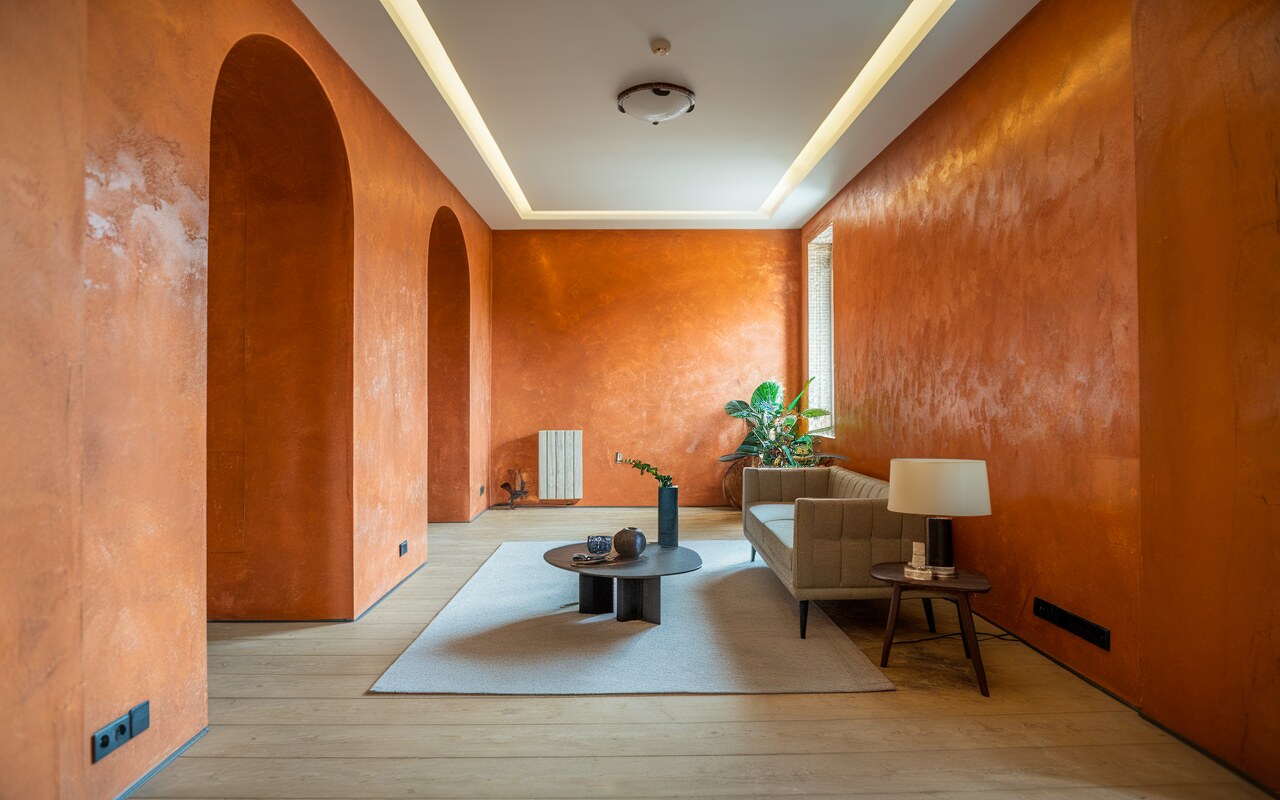
4. Venetian Plaster
If you want a high-end, elegant look, Venetian plaster is the perfect choice. This texture mimics the appearance of polished stone or marble, adding a sense of luxury to any space.
You can achieve this by applying multiple thin layers of plaster and polishing them to create a smooth, luminous finish. Venetian plaster is a timeless choice, but it comes with a higher price tag and requires a professional application to achieve the best results.
Pros: Exudes sophistication, reflects light beautifully, and lasts for years.
Cons: Expensive and requires a skilled professional for proper application.
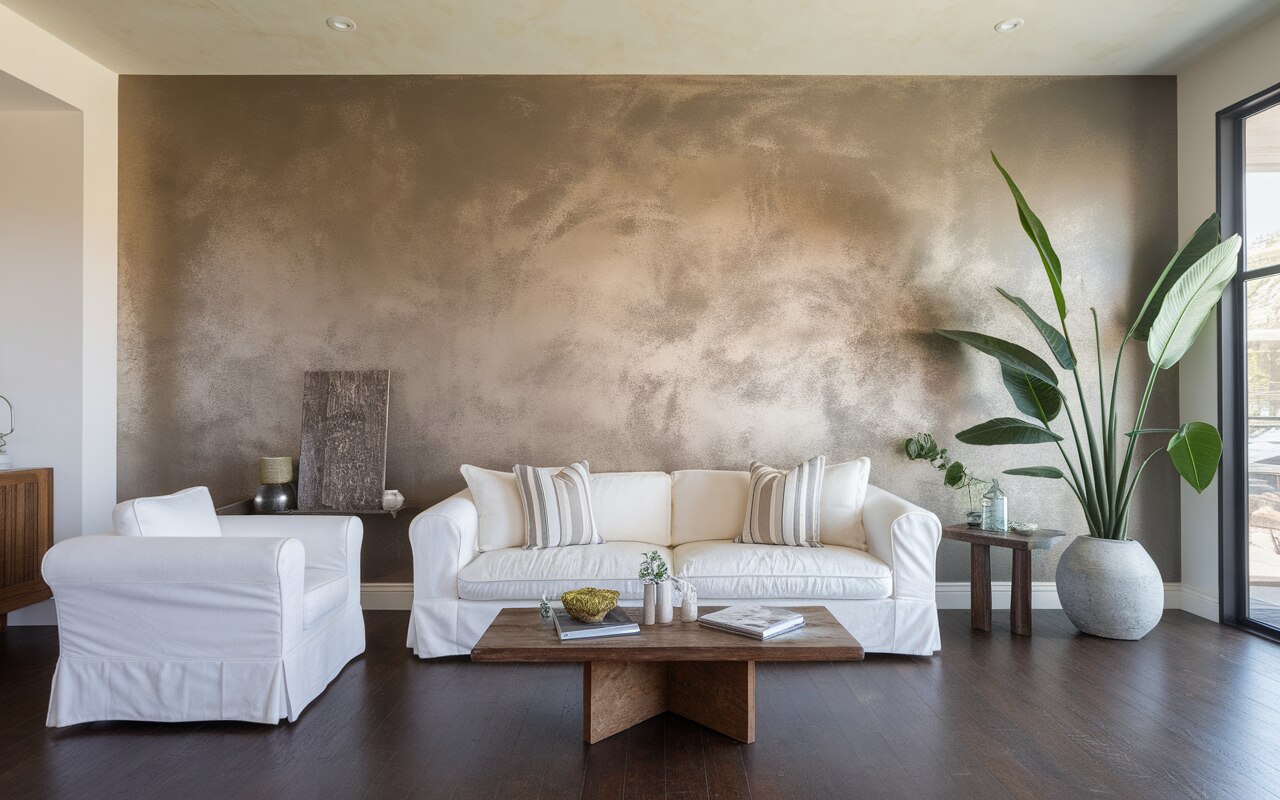
5. Skip Trowel
Skip trowel is a hand-applied texture that creates subtle movement and depth. It is often used in Tuscan, Mediterranean, and farmhouse interiors to bring a touch of old-world charm.
The technique involves lightly skipping a trowel over the surface to create organic, flowing patterns. Because its applied by hand, no two walls look exactly alike, making it a unique and artistic option. However, it takes practice and skill to apply evenly.
Pros: Customizable, adds warmth, and works in various interior styles.
Cons: Requires a steady hand and patience to get the right effect.
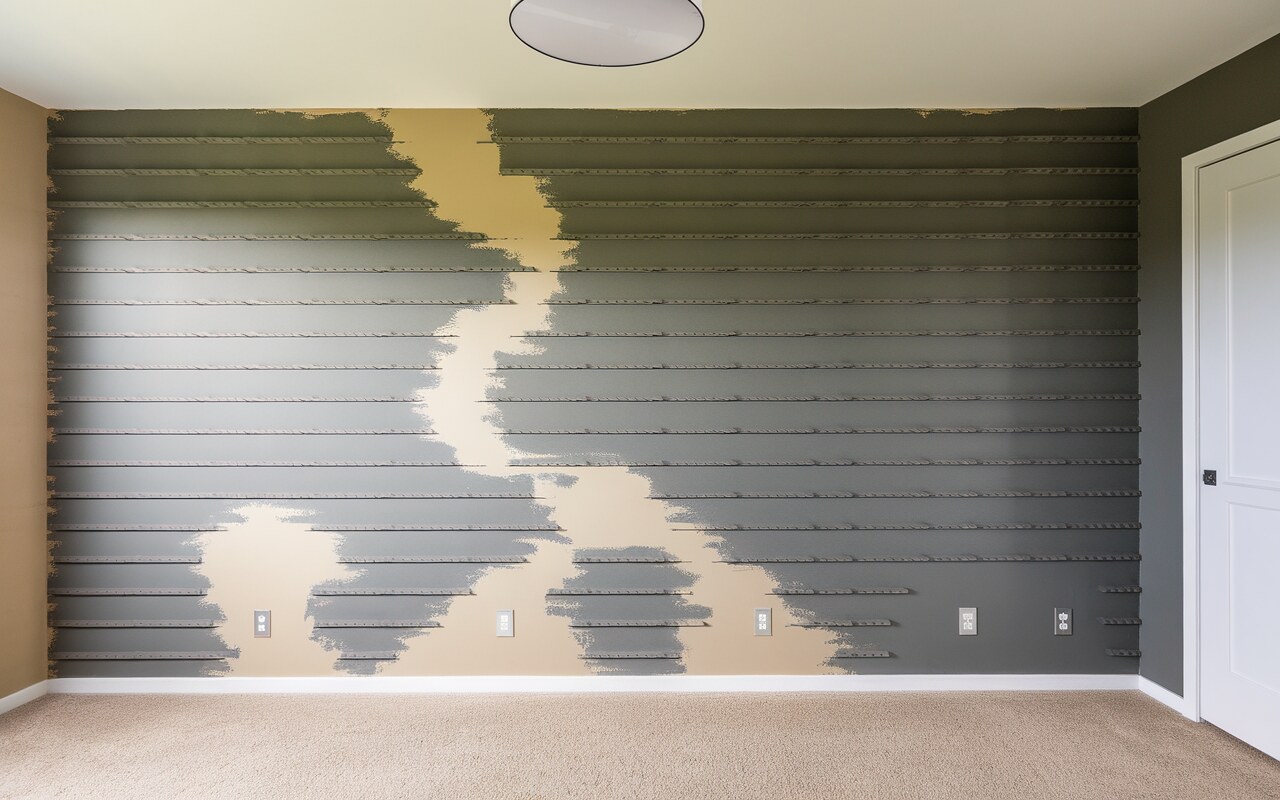
6. Sand Swirl
Sand swirl is an artistic texture that gives walls a soft, flowing design. Its achieved by brushing or rolling sand-infused drywall compound in a circular motion to create delicate swirls.
This texture works especially well in coastal or nature-inspired spaces, adding a relaxed and airy feel. Its a good option for those who want something decorative but not overpowering. However, it requires precision to maintain a consistent pattern.
Pros: Creates a light, natural look, easy to maintain.
Cons: Needs the skill to achieve balanced, even swirls.
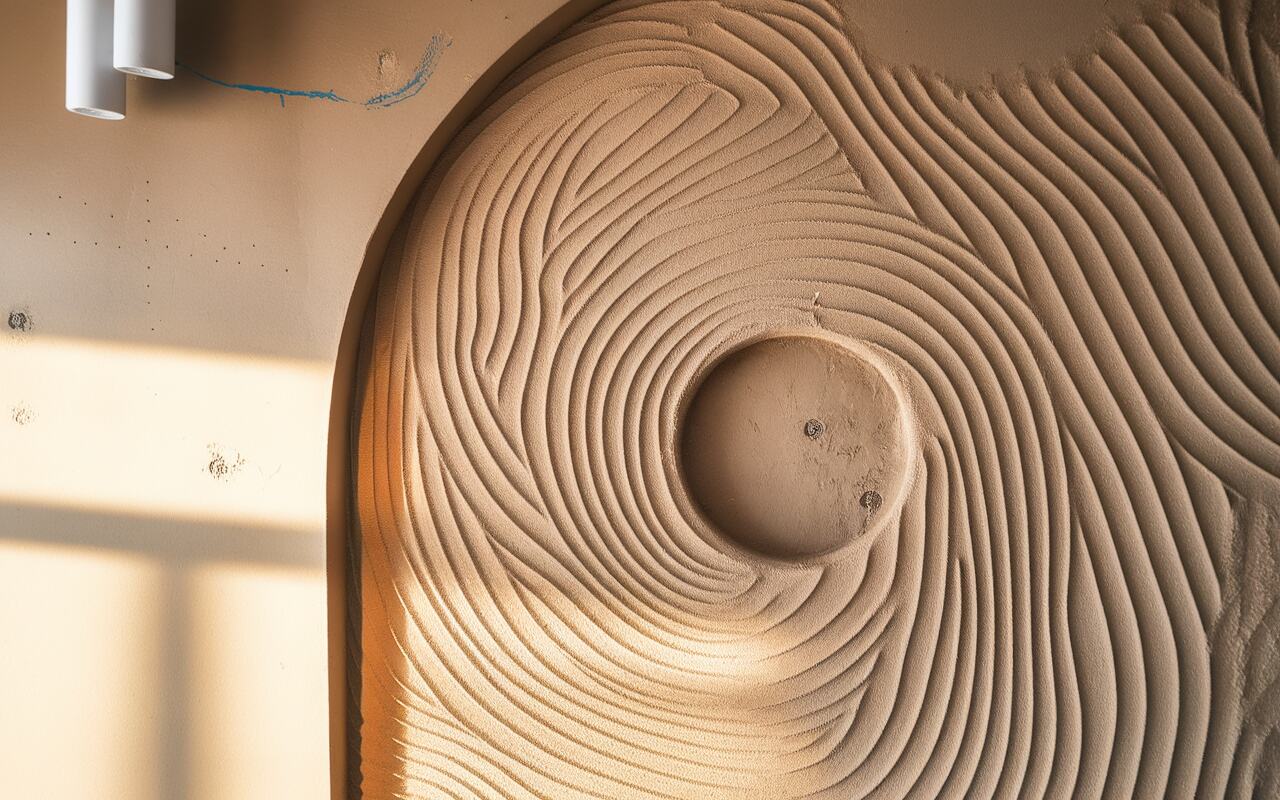
7. Hawk & Trowel
If you want dramatic texture, the hawk and trowel technique is a bold choice. It involves layering drywall compounds using a trowel and hawk, creating deep, organic patterns. This texture is perfect for industrial, rustic, or high-end modern interiors.
It adds an artistic, hand-crafted element to walls, making them a standout feature. However, the complexity of the application makes it challenging to master without experience.
Pros: Unique, bold, and pairs well with modern rustic designs.
Cons: Requires expertise for consistent results.

8. Comb Texture
Comb texture is for those who want creativity and character in their walls. It involves using a notched trowel or comb tool to create wave-like or geometric designs on the surface. This texture was popular in mid-century and retro interiors and is making a comeback in modern eclectic homes.
It allows for endless pattern variations, making it a great option for feature walls or artistic spaces. However, its not ideal for sleek, contemporary designs that favor smooth finishes.
Pros: Highly customizable, fun, and unique.
Cons: Best suited for retro or artistic interiors rather than modern minimalism.

9. Rosebud & Spanish Lace
These textures bring artistic detail to walls and ceilings. Rosebud texture creates delicate, raised patterns resembling flower petals, while Spanish lace has an intricate, lace-like effect.
Both styles add refinement and visual interest, making them ideal for accent walls and ceilings in traditional or decorative interiors. Since they require hand-applied precision, achieving a clean, detailed look takes practice and skill.
Pros: Adds charm and elegance, great for decorative accents.
Cons: Requires careful application for a polished finish.
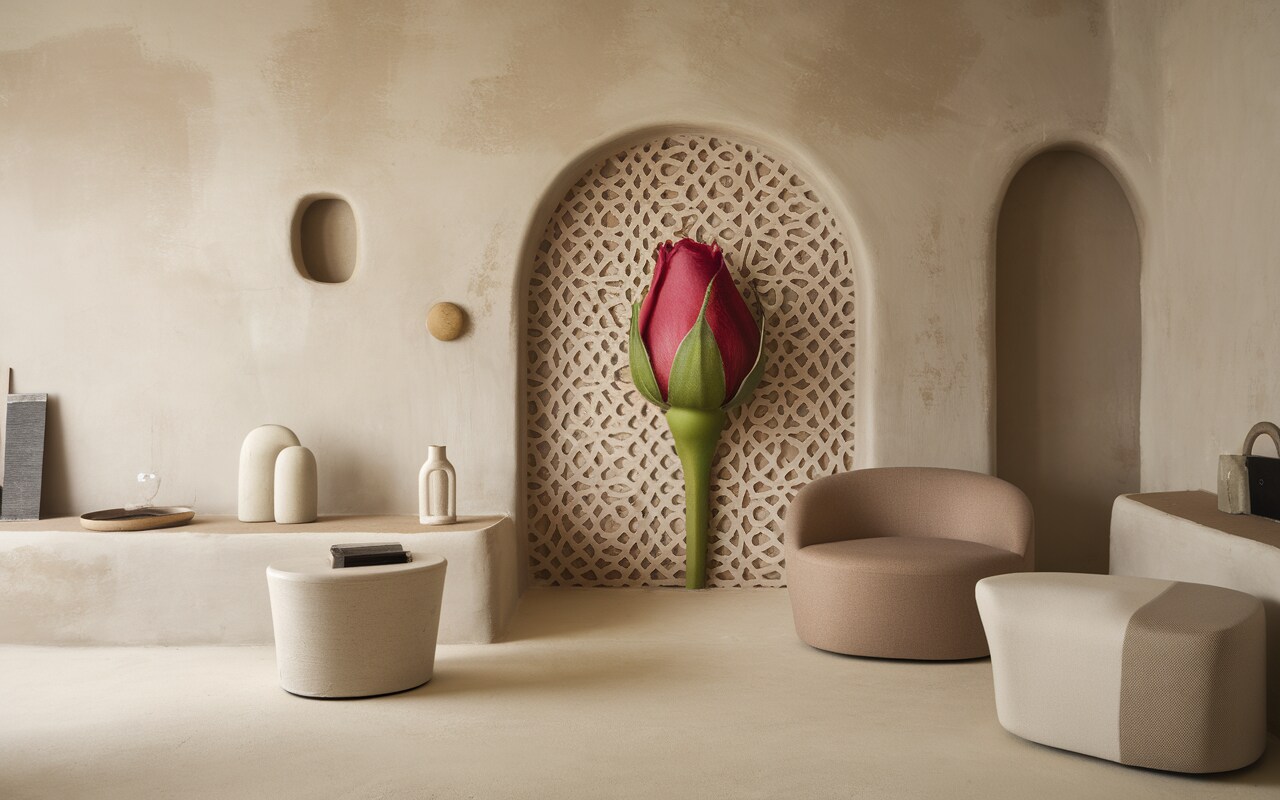
How to Choose the Right Modern Drywall Texture Type
Match It to Your Style
Your drywall texture should complement your homes overall design. Smooth and Venetian plaster finishes work best in modern and contemporary spaces. They create a clean look that enhances open layouts and sleek furniture.
These finishes reflect light well and make rooms feel spacious. If you prefer a simple, elegant aesthetic, a smooth finish is the best choice. For a rustic or farmhouse feel, skip trowel and knockdown textures to add warmth and depth.
These textures create a slightly rough but refined surface that pairs well with natural wood and vintage decor. Hawk and trowel or concrete-inspired finishes suit industrial and modern chic designs, bringing raw, urban appeal. These textures add depth while maintaining a clean, structured look.
Consider Maintenance
Different textures require different levels of care. Smooth and knockdown finishes are easy to clean and maintain. Dust and dirt dont settle easily, making them great for busy households.
A quick wipe or a fresh coat of paint keeps them looking new. If you want a low-maintenance option, these textures are the most practical. On the other hand, Venetian plaster and slap brush textures demand more upkeep. Their deep grooves and intricate designs trap dust and require careful cleaning.
Venetian plaster needs occasional polishing to maintain its glossy finish. Slap brush textures, with their raised patterns, are harder to dust and repaint evenly. You need to consider how much time youre willing to spend on maintenance before choosing a texture.
Lighting & Texture
Lighting can change how a wall’s texture looks. Soft textures like skip trowel or knockdown blend well with natural light, creating a warm, diffused effect. In rooms with large windows, these textures highlight depth without overpowering the space.
If your home gets plenty of sunlight, softer textures can enhance the brightness and add subtle character. In contrast, bold textures like Venetian plaster, hawk and trowel, or comb texture work best under artificial lighting.
Spotlights or recessed lighting can create dramatic shadows that enhance these textures. If you want your walls to be a focal point, you can choose a bold texture and experiment with directional lighting to highlight its details.
FAQs:
What is the most durable drywall texture?
Knockdown and skip trowel are highly durable, hiding scuffs and wear. Their slightly uneven finish prevents noticeable damage, making them great for high-traffic areas.
Which drywall texture works best for small rooms?
Smooth and light orange peel textures are best, as they reflect more light and create an airy feel. Avoid heavy textures like popcorn or slap brush, which can make spaces feel cramped.
What is the best drywall texture for ceilings?
Knockdown, Spanish lace, and popcorn work well for ceilings as they conceal imperfections and enhance sound absorption. However, smooth ceilings are trending in modern spaces.
Can drywall texture be customized?
Absolutely! Comb, Venetian plaster, and slap brush allow for custom designs, while techniques like hawk & trowel layering can create a one-of-a-kind texture.
What drywall texture is best for humid climates?
Venetian plaster and smooth finishes resist moisture and mold buildup, making them ideal for humid regions. Textures like popcorn and heavy stucco can trap humidity and lead to mold growth.
Conclusion:
Whether you’re drawn to the sleek elegance of smooth walls or the bold character of knockdown and skip trowel, the right modern drywall texture type can transform your space.
You need to just consider your design style, maintenance preferences, and lighting to make the best choice.

